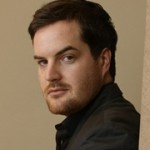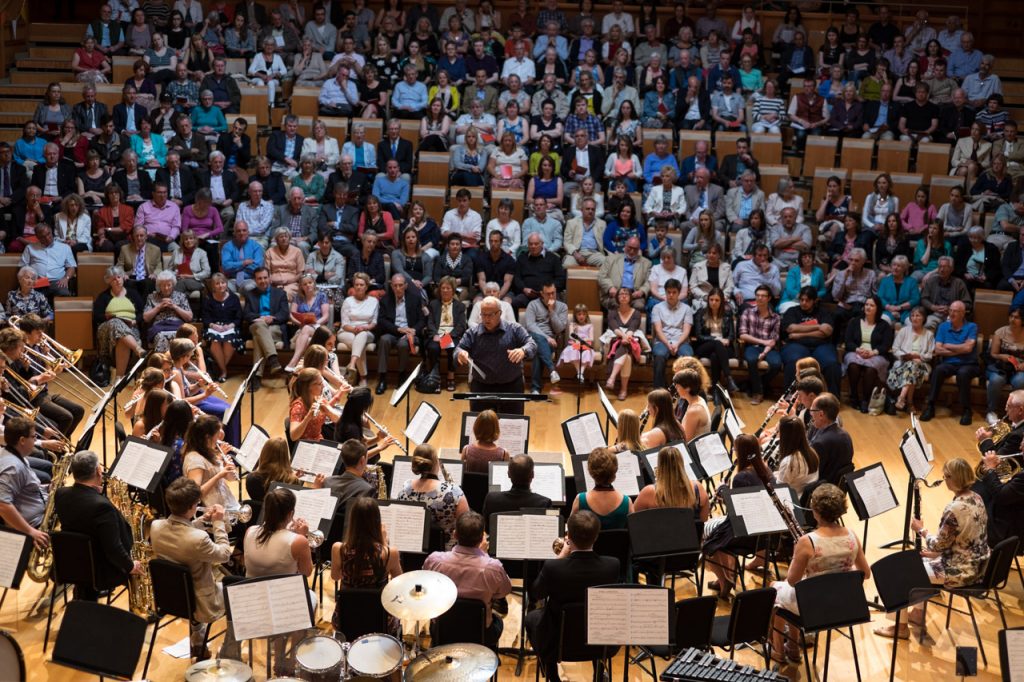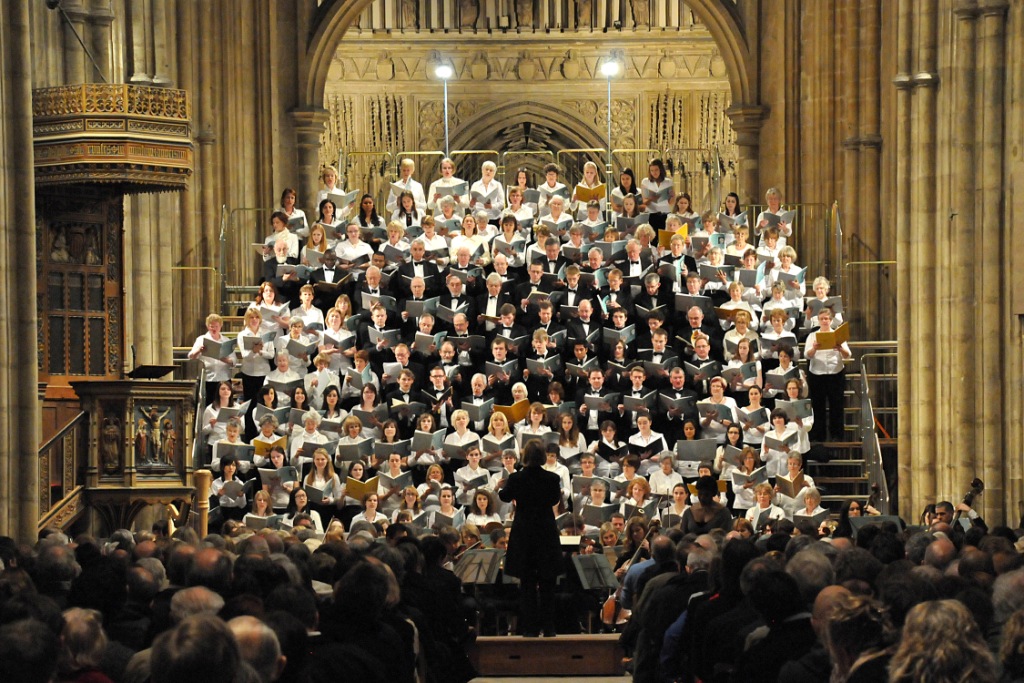An occasional series featuring guest posts and contributions.
—————-
This post comes from Music Scholar and first-year Architecture student, Chris Gray. Chris plays tuba in the University Symphony Orchestra and Concert Band, and sings bass with the Chamber Choir and the Cecilian Choir. Chris has previously been Principal Tuba with the Wessex Youth Orchestra for three years, and lives in Poole in Dorset. He recently played in the University’s Colyer-Fergusson Concert in Canterbury Cathedral.

—————–
Bleurgh. 9am. Is all this really worth it?
Saturday 13th March. Eliot College music store room. Day of the Cathedral Concert.
I guess this was it, the start of a long day, culminating, hopefully, in a wondrous concert. That last sentence is tinged with doubt, not because I have no faith in my fellow musicians, but because on the day of a big concert like this, doubts do start creeping up into your mind about your own musical ability, and being a tuba player, you have good reason to! Hitting the top A in the Strauss, playing the octave jumps in the Poulenc….
I started off the day doing what I am useful for, moving heavy percussion. We successfully threaded the timpani through a tightly-packed store room and through the bowels of Eliot College. I took great delight in marching with the bass drum, banging it loudly informing the residents of Eliot College of my impending heroics lifting timpani into the idling van outside…. more like trying to wake everyone up to let them share the beautiful crisp spring morning with me and the other musicians up at this torrid hour.
A very nervous journey in the percussion van from campus to the Cathedral ensued with glances back at the precious cargo every time we heard a bang or crash. We arrived in the Cathedral Precincts and proceeded to unload the van, carrying the percussion down a small make-shift corridor, through the South door and into the Nave.
The Cathedral was already a hive of activity with vergers, members of the chorus and various students and staff from the University milling around tending to their jobs. Once we had located and set up the timps, we started on the chairs for the orchestra under the expert guidance of Sophie and Dan Wheeler. I had heard that fitting the orchestra in between the towering columns of the Nave was a difficult job with no room for error.
We started with the timpani, then the woodwind making sure that the principals of the woodwind section were directly in front of the podium….. one of Sophie’s pet hates. Then the brass in two rows so the lower brass could deafen the trumpets who in turn could inflict ear-splitting terror on the violas. The strings worked out nicely and with the podium for the conductor and soloists in the correct place, in accordance with Health & Safety providing a 1.4m gap around all obstacles, it was done. I stepped back…. plenty of room, don’t know what the fuss was about!!
Then I saw where I would be sitting…..
Words cannot describe the predicament I would be in. Stuck behind a pillar, wedged between a desk of the double basses and the timpani, I dreaded the moment when ‘the listener is catapulted headlong into a torrid allegro’…. (Sue’s programme notes). I thought I would never get the downbeat in the right place…. What if I came in a bar early….?
Then the long and arduous process of seating the chorus took place. To liken it to a familiar occurrence would be like watching the start of the London Marathon, yet the athletes were tethered down and then when they did break free of their reigns, they would be running on treacle…
Rehearsals started dead-on 11.15am…. yeah right, on days like this you can bet your house that they don’t, it’s something about a large group of chattering people in a confined space that seems to make you lose track of time.
Rehearsals began with the Szymanowski, so time for coffee for the lower brass players or in my case a lovely white Malteser milkshake! One thing I noticed whilst watching the rehearsals, was the length of acoustic in the cathedral. 3 seconds! How we would pull of the Strauss or the delicacy of the Poulenc was beyond me, but somehow in this setting, the pieces seemed to fit and gel with the architecture of the building. Good choice of programme, I’d say!
Then came my moment of glory, my incredibly important part in the Poulenc, all 33 bars of it! I do like the piece, I just find it hard to look past the part I’m playing and listen to the overall work, listening to it, here, now, in the comfort of my own room you can appreciate the ‘juxtaposing of thematic cells’… (Sue’s programme notes again).
Poulenc done. 15 minutes for lunch…. yes I know, that is how committed we musicians are!
Onto the Strauss which does have a very nice tuba part. I enjoyed playing this, although the droves of Cathedral visitors milling around during rehearsal not only annoyed Sue but most of the orchestra as well. Nothing like the musical setting of the transfiguration of a dying artist to the backdrop of chattering schoolchildren. Strauss almost done, but no, we need to rehearse the last 6 bars over and over to try and kill the brass… Then onto the Ravel (sorry not much to say about this, I went outside).
2.15 came, relaxed for the rest of the day. DJ – check. Time to go!!!
7.30 concert time. Well not for me, I watched from the sideline as Ravel and Szymanowski didn’t want me in their music. It was interesting to watch people prepare for the concert the inexperienced paced… the experienced laughed and joked about the inexperienced. First half finished after amazing performances from orchestra, choir and soloists.
Then came the second half and it was time to play some Strauss. I kept fiddling with my bowtie, asking people if it looked right or not, but in the end it didn’t matter because I was sat behind a pillar! The Strauss went well, and it was amazing to be part of such a large orchestra, now, after weeks of rehearsals, playing as such a coherent group of musicians as one huge music making machine churning out bar after bar of absolute perfection. Sorry, got carried away in the music there… it happens. Then the Poulenc, the wonderful individuality of this underrated French composer coupled with the skills of Sue bringing chorus, orchestra and soloist into a blazing finale. Blazing finale meaning fading away into nothing!
The audience loved it, the Cathedral had been filled with vocalists and instrumentalists alike, and we did ourselves proud. On the drive back to campus from the Cathedral, I asked myself the same question that I asked myself that morning, some 13.5 hours ago…
Was it worth it?
Oh yes.. most definitely.




